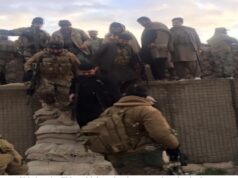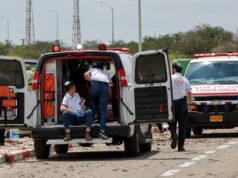An ancient building battles mother nature as melting glaciers make a remote Himalayan valley susceptible to flooding.
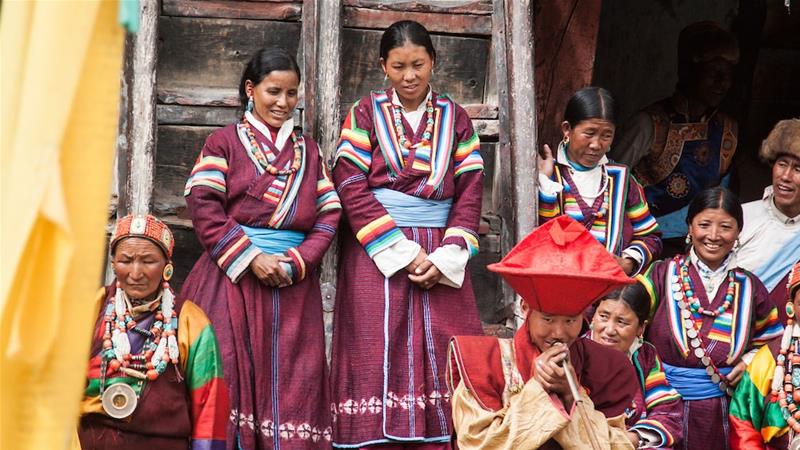
Visitors from nearby villages walk for three days to attend rituals at Rinchenling monastery
The trans-Himalayan village of Halji is a small collection of about 80 closely packed mud-and-stone houses at the base of a moraine hill.
Steep cliffs rise on either side of the village that is flanked by a glacial stream on its left.
By contemporary standards, Halji is extremely remote. It is snowed in and cut off for six months of the year during winter and does not have mobile network connectivity.
The district headquarters, Simikot, is a five-day walk away. And getting to Kathmandu involves an expensive flight from Simikot.
But for centuries before, the three villages of Limi Valley – Halji, Til and Jang – were the focus of a vibrant caravan trade with neighbouring Tibet and part of the larger sacred landscape surrounding the holy Mount Kailash and Lake Manasarovar.
Located in far western Nepal on the border with China, Limi Valley is an isolated but historically significant region where ancient Tibetan Buddhist culture thrives due to its proximity to Tibet.
At the centre of this rich heritage is the famous 1,000-year-old Rinchenling monastery.
Both the valley’s largest village, Halji, and Rinchenling monastery – the cultural and spiritual centre of Limi – are threatened by climate change today.
“Rinchenling is the oldest and biggest monastery in west Nepal,” says Tsewang Lama, an anthropologist and the only parliament member from this district in Nepal.
“Out of 21 students sent by the king of Guge in west Tibet to translate the texts from India’s Kashmir, during the second renaissance of Buddhism, only two returned – one of whom went on to become the famous translator Rinchen Zangpo (958 – 1055). He built 108 monasteries in his life, one of them is this.”
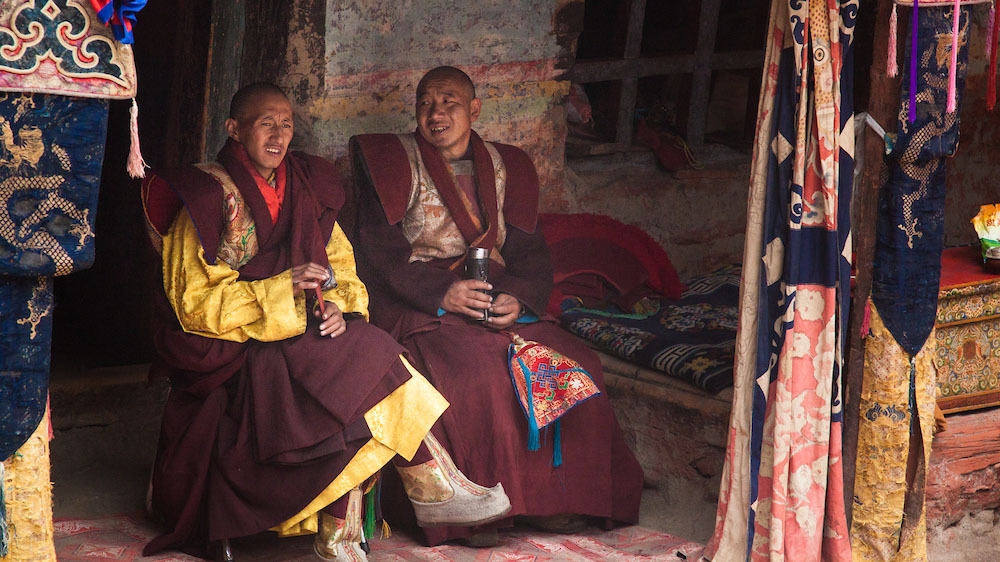
Rinchen Zangpo is widely accredited with the second renaissance of Buddhism in Tibet and Halji’s Richenling is one of the last few surviving monasteries from that period. The rest were destroyed during the Cultural Revolution, which began in Tibet in 1959.
The monastery tries to keep the community intact because if the village becomes empty, then there will be no one left to look after this important institution upholding Tibetan Buddhism in this remote valley.
KHINRAF LAMA, HALJI VILLAGER
Carbon dating of a unique four-fold Vairocana statue supports the claim, placing the monastery in a similar period as Rinchen Zangpo.
The monastery houses valuable artefacts and relics that are kept hidden; few visitors are allowed to see them because there is a fear antiquities might be smuggled, says Khinraf Lama, a resident of Halji village.
However, climate change brings a unique problem in the Himalayas, where melting glaciers are feeding newly formed supraglacial lakes – water accumulation on top of glaciers – susceptible to sudden and catastrophic flooding known as glacial lake outburst flood (GLOF).
Halji is in the direct path of a supraglacial lake developed at the end of a glacier over the mountains behind, situated at a distance of 6.5km from the village.
At least six GLOF events were recorded between 2004 and 2011, the 2011 flooding being the most severe, where a part of the village on the west and large tracts of arable land were washed away rendering it unsuitable for further cultivation.
Rinchenling is the oldest monastery in west Nepal [Neelima Vallangi/Al Jazeera]
The monastery sits merely 30 metres away from the previous flood path, adjoining broken walls of the collapsed houses.
As glacial retreat hastens with rising temperatures, the possibility of another outburst looms large.
“The changing climate adds the danger of development of supraglacial lakes which are prone to sudden drainage,” says Jan Kropacek, a researcher at the faculty of environmental sciences at Czech University of Life Sciences Prague, who has studied the Limi Valley.
A 2011 report assessed the possibility of GLOF occurrences in Nepal and found out there were at least 1,466 glacial lakes and 21 of these were deemed potentially dangerous.
In 2016, the Nepal government attempted a risky operation to drain five million cubic metres from the critically flooded Imja Tsho near Mount Everest that endangered the lives of more than 12,000 people downstream.
While human intervention was required to contain the potential breach at Imja Tsho, nature took its own course towards a temporary respite at Limi valley’s Halji glacier.
“The recurrent GLOF, which rushed down the valley just tens of metres from the [Rinchenling] monastery, has not occurred since 2011,” says Kropacek. “Since 2012, the lake drainage has been altered by a combined effect of ice movement and melting.
“In the summer of 2018, a change of the lake drainage with respect to the first field visit in 2013 was observed.”
The outlet channels do not seem to close during winter season any longer, causing no meltwater accumulation in the basin currently.
Although, supraglacial lakes close to the ice margin follow a dynamic from evolution to deterioration, which is difficult to predict, according to Kropacek.
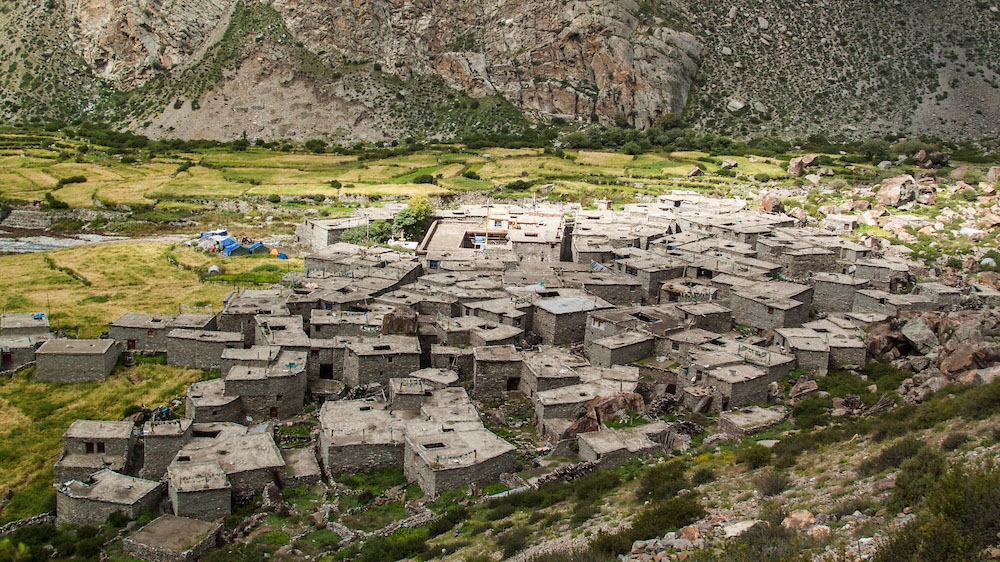
Situated at a height of 3,700m in the Trans-Himalayan range, Halji is the largest of three villages in Nepal’s remote Limi Valley [Neelima Vallangi/Al Jazeera]
Following the 2011 flood, gabion walls and sandbags reinforcements have been constructed along the river as well as glacial stream banks in conjunction with local authorities and NGOs.
The monastery’s historical significance helped generate interest and raise funds nationally and internationally which led to concerted efforts to improve the flood resilience of Halji and monastery restoration in recent years.
However, the inherent unpredictability of glacial lake outbursts combined with the rising temperatures present a constant threat.
In a place as remote as Halji, continuous monitoring and improving flood resilience may be the only solution, since mounting an operation to drain a glacial lake in the event of a potential flood is highly unlikely.
This situation shines a light on the ways climate change endangers not only the tangible resources of a region but also the often overlooked cultural landscape.
Loss of revered traditions and heritage can profoundly affect isolated and close-knit communities.
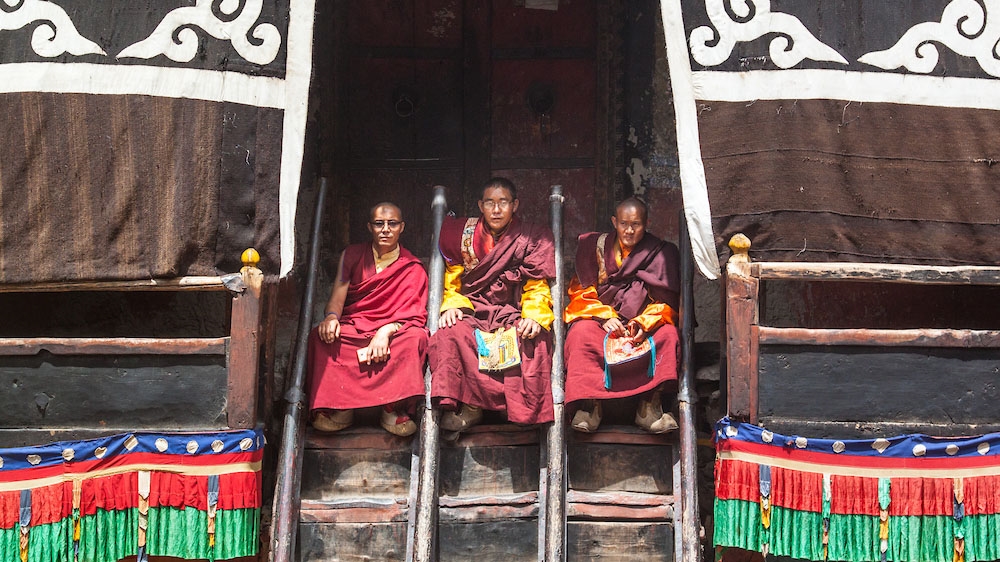
Monks resting on the wooden steps of Rinchenling, which is believed to be the last of the 108 monasteries built by the legendary translator Rinchen Zangpo during the second renaissance of Buddhism in Tibet [Neelima Vallangi/Al Jazeera]
In Halji, the monastery is not only seen as a spiritual cornerstone, but it also plays a considerable part in governance and sustenance of the village.
According to Kunchok Dorjee, a 26-year-old resident of the neighbouring Jang village, there is a higher rate of migration in the villages of Jang and Til, but Halji has maintained a healthy population due to the monastery’s strict regulation.
“The monastery tries to keep the community intact because if the village becomes empty, then there will be no one left to look after this important institution upholding Tibetan Buddhism in this remote valley,” says Khinraf Lama, the Halji villager.
Along with the Arctic and coastal regions, the remote Himalayan communities are also among the first to experience the harrowing effects of rising global temperatures.
The way this historic monastery, its priceless artefacts, and the Tibetan culture are under threat is emblematic of the larger climate-related issues faced by mountain communities across the Himalayas.
While Halji has the monastery to attract the attention and action, it raises the question – what happens to vulnerable communities without divine intervention?
This story was produced with the support of a reporting grant from ICIMOD (International Centre for Integrated Mountain Development).

